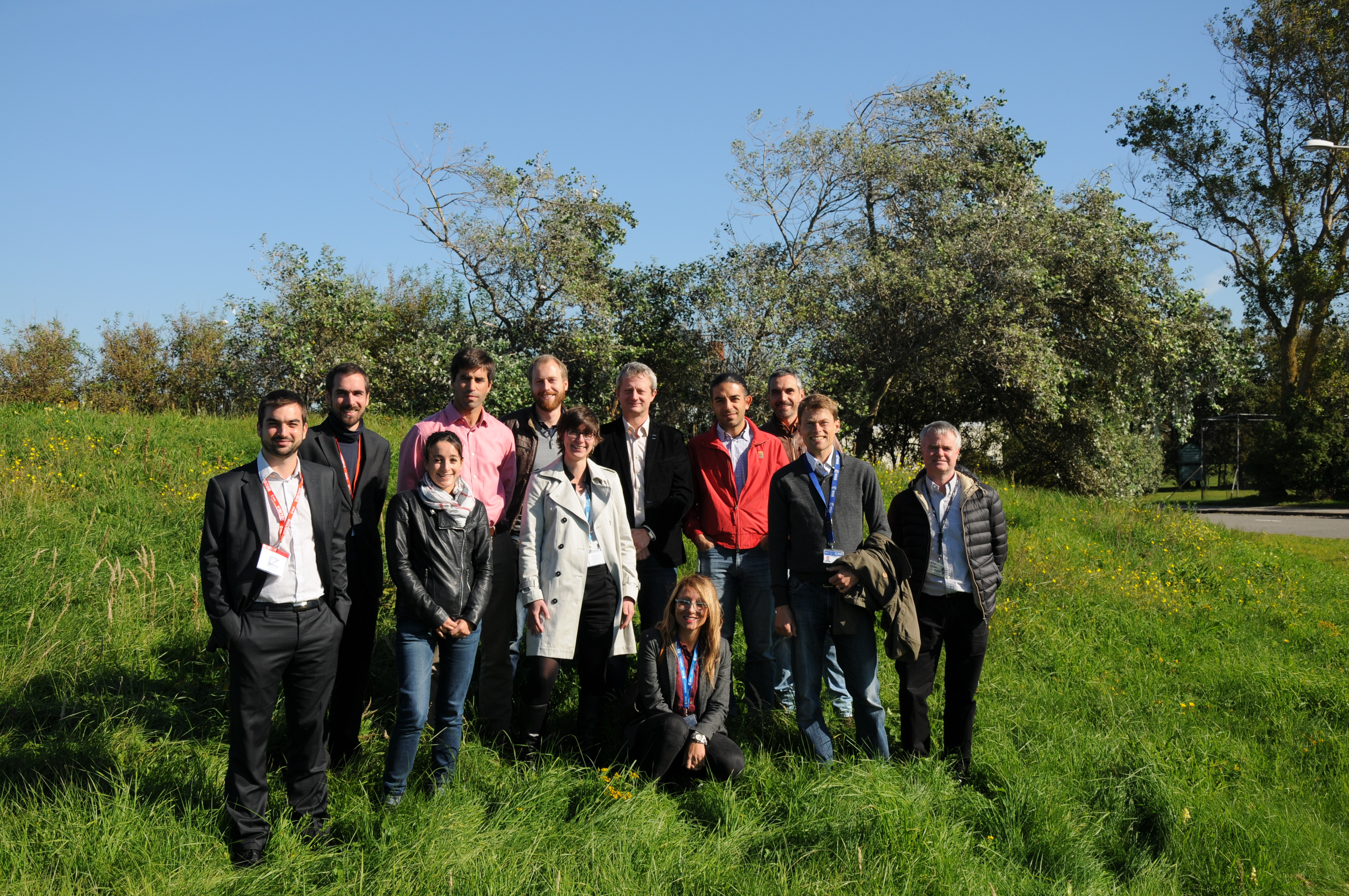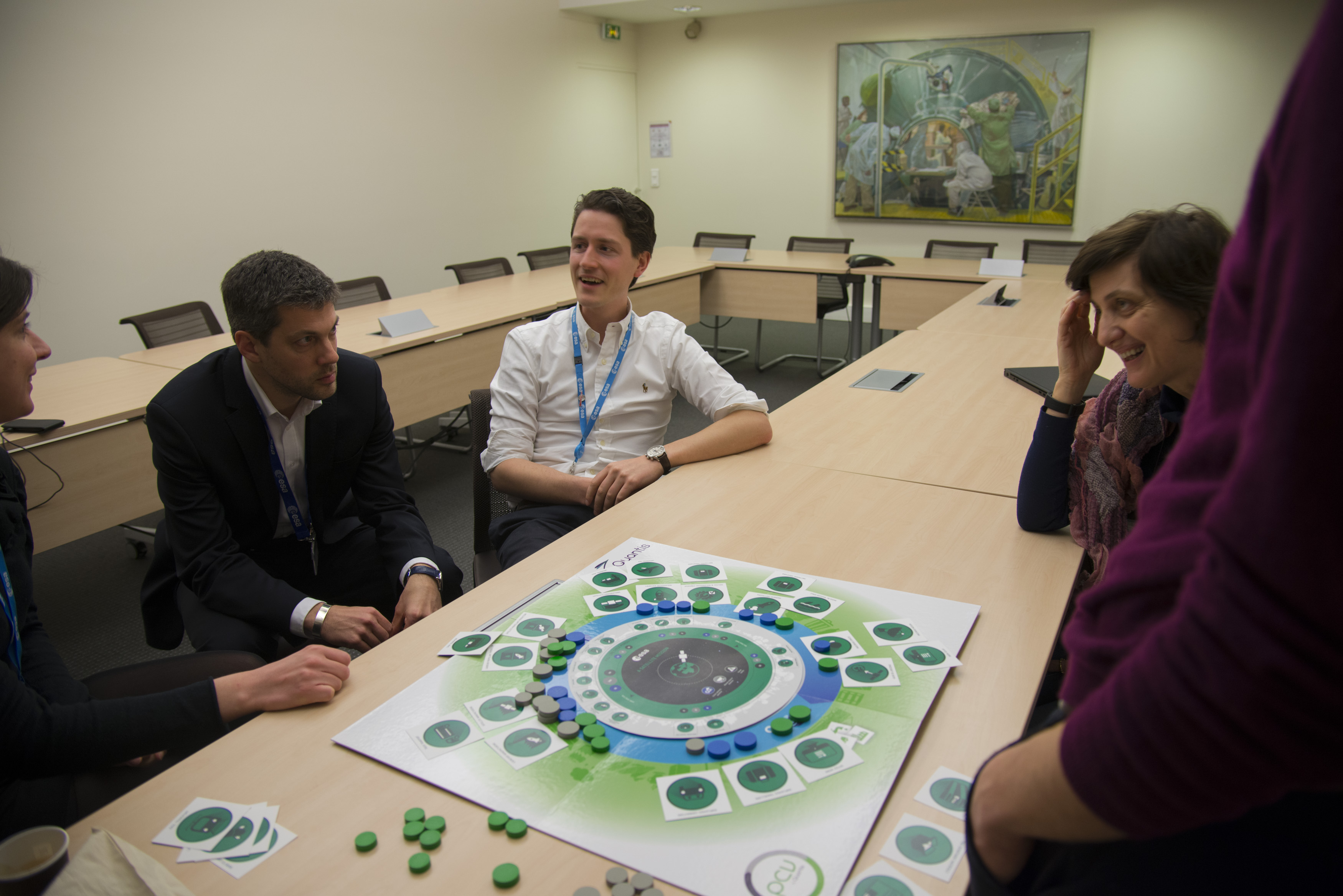We love introducing students to ecodesign of space missions. Here’s how we do it.
Do you remember when we said that an important part of the EcoDesign initiative here at Clean Space was implementing training sessions in order to raise awareness about the space sector’s environmental impact and the role of LCA in how to reduce it?

Training: Ecodesign for space missions
Well, we are actually doing that through events and training sessions both inside ESA and in European universities where we use our EcoDesign board game, the first game about the environmental impacts of a space mission. It builds on the work that we have done in the past, performing life cycle assessment studies on both launchers and satellites.
During the game, players first construct the life cycle of a space mission from design to use, by placing cards at the right point around the board. Then comes the hard part, they have to guess how much each mission phase contributes to the overall environmental impact. There is often much discussion amongst the teams, but this is exactly the idea. Then the moment of truth, the board is flipped to show the real impacts, and the difference between the perception and the reality. This is where the game gets its name from – Life Cycle Perception – as it highlights the gap between perception and reality. Usually it’s not without some surprises.

The very first ecodesign game session at ESA
Life cycle assessment is multi criteria and in the game we talk about indicators such as the consumption of mineral resources, the use of substances that might be toxic for humans, and greenhouse gas emissions.
Too complicated? It seems not, at least considering the response we received from the two universities we have already visited: EPFL – École polytechnique fédérale de Lausanne (here a summary of the day written by them) and Supaéro. The students were immediately engaged, asking great questions and discussing a lot in their small groups. They enjoyed adding an element of competition, seeing which group was able to guess the environmental impacts closest to the real ones. Generally, the students said that the fact of guessing and seeing where you were wrong, rather than just being initially told the answers, really helped them to remember the main takeaways.

Playing at SUPAERO
We think that is very important to work together with universities and to engage as many students as possible. As the engineers of tomorrow, if they can bring into the working world a new mentality in which environmental protection is included as a fundamental part of the design process, it could make a huge difference in how much the space sector pollutes Earth and space. It can actually make a difference in more sectors than just Space industry: the idea of evaluating the impact of a product or service across its entire lifecycle to find solutions that reduce the impact can be applied across many industries.
Also, at ESA we value very much young graduates, their knowledge, their enthusiasm, their fresh vision. There is a program called Young Graduate Trainees that allows graduating students to spend a year working in the Agency, check it out here.
These first sessions have included mostly undergraduate/graduate students in aerospace engineering, and this will remain the case in our next session, planned at the University of Delft in March this year. Nonetheless, we hope to be able, in the future, to involve students from a range of backgrounds and maybe also to have the chance to carry on similar events with engineers that currently work in the space industry, through game-days at ESTEC. Unfortunately the game currently demands the presence of a game leader, so that at least one of us has to travel to the site to run the session: we love doing that but we don’t get the chance to do it very often! Let’s hope that in 2017 we will be able to line up more and more game-session with students all around Europe.





Discussion: no comments